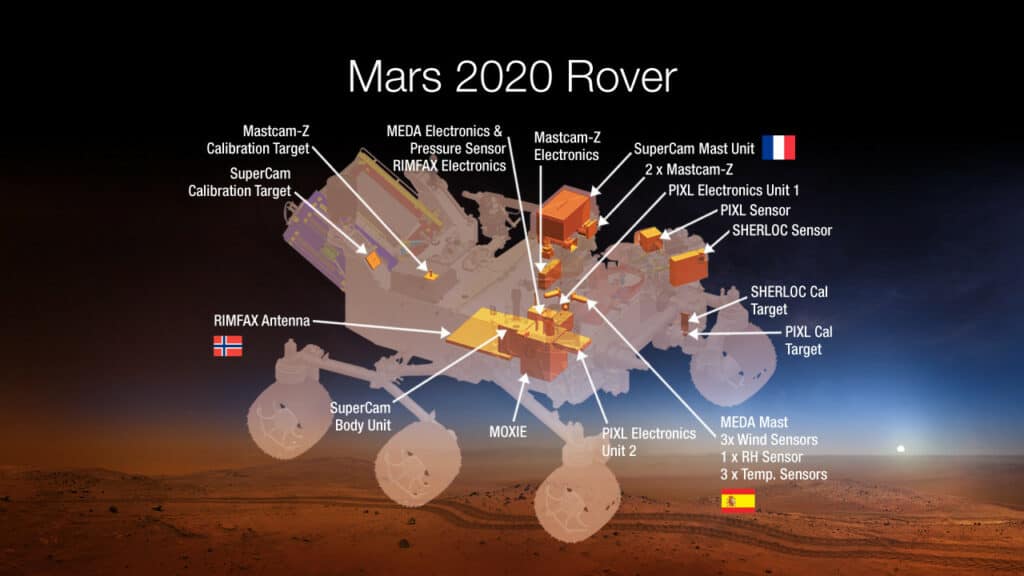NASA states: “We’re going to try and make Oxygen from the atmosphere on Mars.” And NASA wants to do so with their next—Mars 2020 Rover.
NASA obviously has MASSIVE plans for the red planet.
While we are still a far away from actually sending humans to the surface of Mars, NASA seems to be already paving the way for human colonization.
To put man safely on Mars, and create an eventual Martian colony, the American space agency needs to overcome quite a few obstacles.
According to reports, NASA aims to use Mars’ own atmosphere—Yup, Mars has an atmosphere—in order to produce oxygen when it lands its 2020 rover, according to Robert Lightfoot, acting NASA chief administrator. Oh, check out the potential landing sites for the Mars 2020 rover here.
This is NASA’s Mars 2020 rover. Image Credit
Among the agencies numerous plans, it wants to bring bugs—ok not bugs but microbes—to Mars using an MIT device referred to as MOXIE. These microorganisms would have one goal only: produce oxygen on the surface of the red planet and harvest it for breathing.
In an interview with Futurism, Lightfoot said: “The next lander that is going to Mars, Mars 2020, has an experiment where we are going to try and actually generate oxygen out of the atmosphere on Mars that’s for human capability down the road.”
Creating oxygen on Mars is something NASA has thought for quite some time. In fact, the idea was coined in 2014 when the agency first revealed its Mars 2020 rover.
But is it possible to create oxygen on a distant planet? According to NASA, yes, and they’ll want to use the MOXIE—aka Mars Oxygen In situ resource utilization Experiment—as the ultimate tool. MOXIE is a big deal actually, as it was selected from 58 instrument proposals submitted by different research teams from around the world.
Scientists want to transport micro organisms from Earth to Mars—with the most likely candidates being either bacteria or algae—which would utilize the red planet’s soil as fuel, in order to create oxygen as a result.
Eventually, this oxygen could be harnessed making it suitable for breathing on Mars. If this process works, it would eliminate the tenuous process of actually sending liquid oxygen stores to Mars. That’s a big deal since it would allow us to transport more important things to the surface of the red planet.
However, oxygen would not only be used by future astronauts on Mars. NASA plans to utilize oxygen to make rocket fuel for trips back to Earth, further reducing the price tag on taking humans to Mars, and back home.
Current tests here on Earth have shown how MOXIE should work without issues on Mars. However, in order to properly test it, NASA will need to send MOXIE to Mars and make sure it works there. If it proves worthy, the system could later be adapted to a much larger scale, and support future colonists on the surface of Mars, making it much easier for the human race to colonize not only our neighboring planet but the entire solar system as well.
(H/T Futurism)


